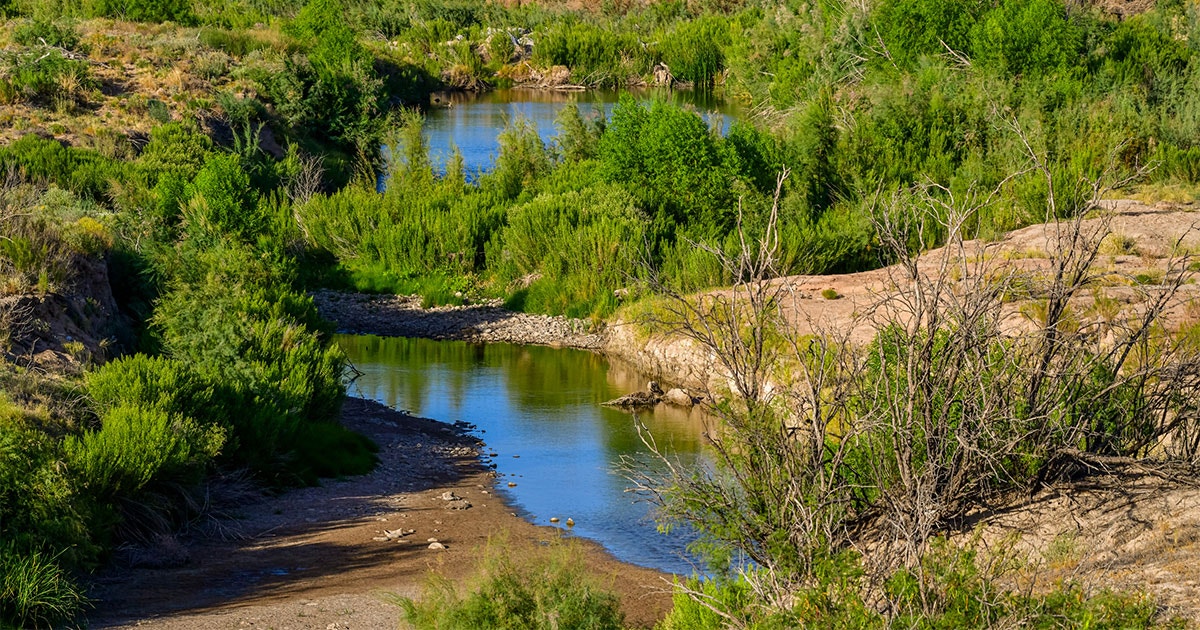It’s an old joke in the West that BLM stands for “Bureau of Livestock and Mining.” In reality, the U.S. Bureau of Land Management’s mandate is far more expansive. It’s charged with overseeing one-tenth of the nation’s land while balancing competing uses—such as grazing, resource extraction, recreation, and wildlife—to keep it healthy and productive for future generations.
Still, critics say the BLM has earned its reputation for catering to industry. By one estimate, the bureau makes 90 percent of its land available for oil and gas leasing. A 2022 report found that 54 million acres of rangeland—about one-third of what the BLM manages for livestock—are unhealthy by its own standards, largely due to overgrazing. “For too long, land management planning has been dominated by extractive industries,” Interior Secretary Deb Haaland told journalists in April.
The Biden administration aims to change that. In a draft rule likely to be finalized next year, the BLM plans to put conservation officially on equal footing with other land uses. Viewed one way, the proposal merely clarifies the mission that Congress established for the BLM in 1976. Yet it also signals a reorientation: elevating habitat protection and restoration in the management plans that determine what happens on 245 million acres, from Arizona to Alaska. Advocates see the move as a once-in-a-generation chance to improve the outlook for ecosystems fractured and degraded by development, invasive species, drought, and wildfires. “This is telling all of BLM at once: Conservation is a legitimate use of public lands,” says Judy Calman, Audubon Southwest’s New Mexico policy director. “That’s a message that has never come from Washington before.”
To carry out that directive, the draft rule creates a clearer process for tapping an underused land designation—Areas of Critical Environmental Concern, or ACECs—to protect rare habitats, cultural artifacts, and other special resources. Today, vague guidance and patchy execution by the bureau’s field staff limit the designation’s power, experts say. Calman, for example, has waited more than a decade for the BLM to designate ACECs on four tracts she nominated that are increasingly threatened by New Mexico’s oil and gas boom.
Clearing the way for more ACECs is important on its own, but the proposal goes further. For one, it aims to involve Indigenous people more explicitly in the BLM’s decisions. If implemented in earnest, the shift would weave tribal knowledge of the land into its management, says Gussie Lord, managing attorney of the Tribal Partnerships Program at Earthjustice and an Oneida Nation of Wisconsin member.
On top of sharpening existing land-protection tools, the bureau’s proposal also creates a new one: Just as energy companies and ranchers can lease BLM acreage for drilling and grazing, it allows tribes, environmental groups, and others to lease parcels for conservation. These leases, supporters say, not only would generate revenue for the BLM while improving habitat, but could also help the Biden administration to ramp up renewable energy production on public lands. If a solar project will damage habitat for a vulnerable bird, for example, its developer might offset those impacts by leasing nearby land and restoring native plants. “That seems like a recipe for avoiding conflict and potentially even litigation for a project developer,” says Drew McConville, senior fellow at the Center for American Progress, a left-leaning think tank.
Unsurprisingly, the plan to put conservation on par with other uses has stirred accusations of what Republicans in Congress call “a thinly veiled attempt to lock up more lands.” Clean power companies support conservation leases but want the BLM to scrap the rest of the proposal, warning of more barriers to new projects. Other industries are flatly opposed, with groups representing ranchers and oil drillers characterizing the proposal as a radical shift. Lawsuits seem likely.
Public lands advocates counter that such claims are nonsense: The draft rule states that conservation leases don’t preclude grazing, mining, or drilling. Even the overhaul’s cheerleaders admit that fulfilling its promise will be a stretch for the understaffed agency. For example, a new requirement to gauge ecological health of all BLM lands, not just grazing allotments, could triple an existing backlog. “That’s a huge challenge, especially at BLM’s current funding levels,” says Aaron Weiss, deputy director of the Center for Western Priorities.
Still, to Weiss and others, giving the bureau an overdue push in a necessary direction is worth it. “Things are so far out of balance, and have been for so long, that it has resulted in this ecological crisis,” he says. More of the same won’t set it right.
This story originally ran in the Fall 2023 issue as “A Reset for Public Lands.” To receive our print magazine, become a member by making a donation today.

